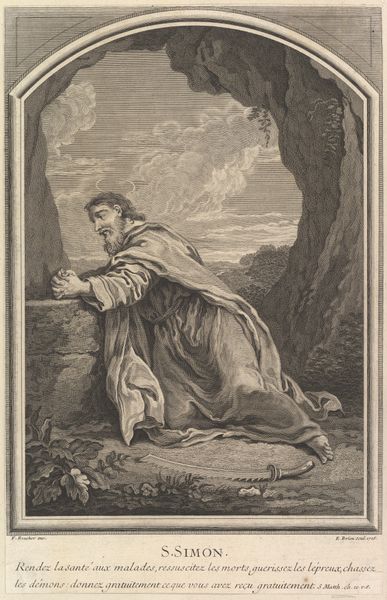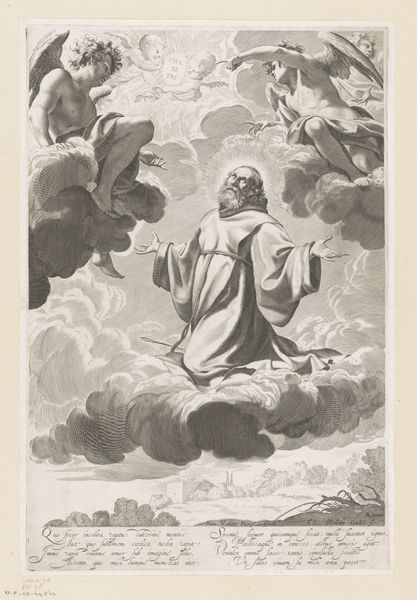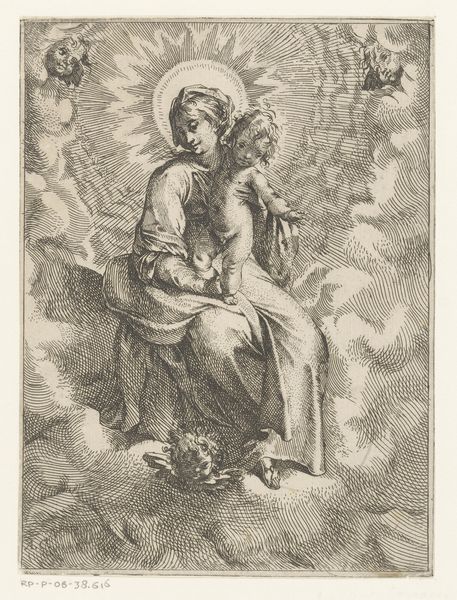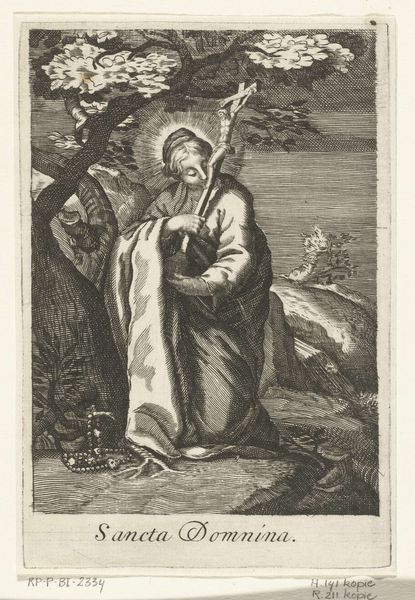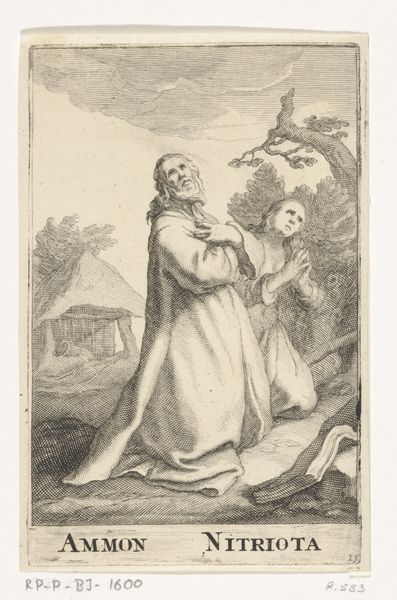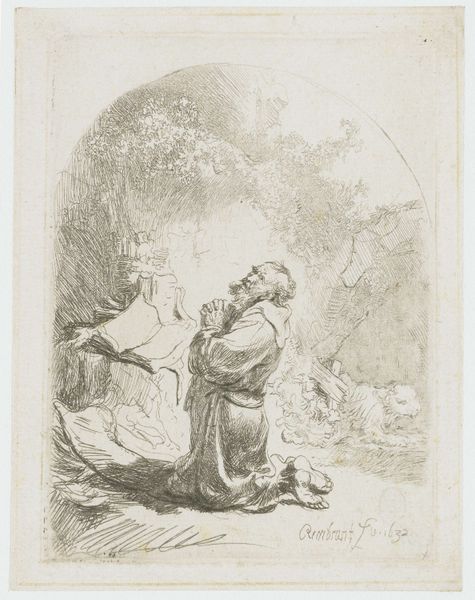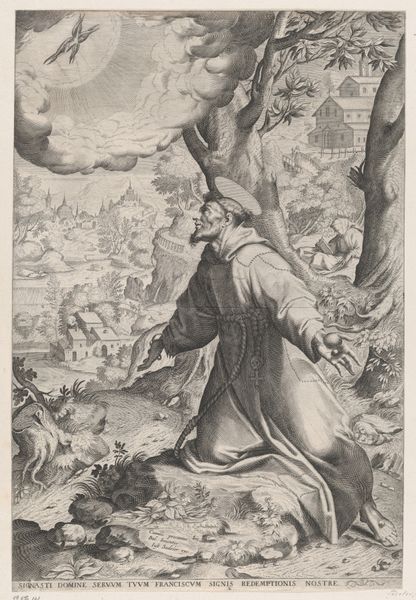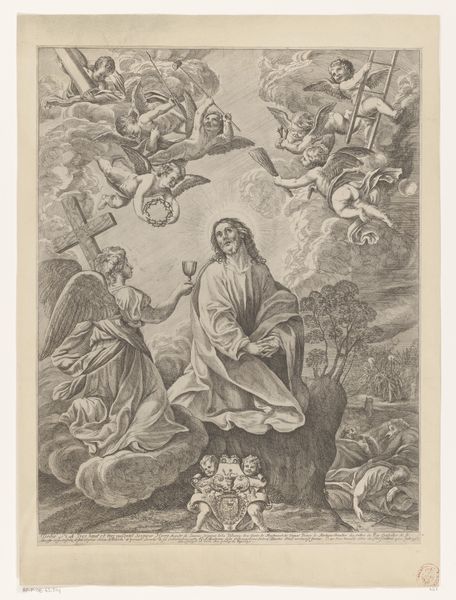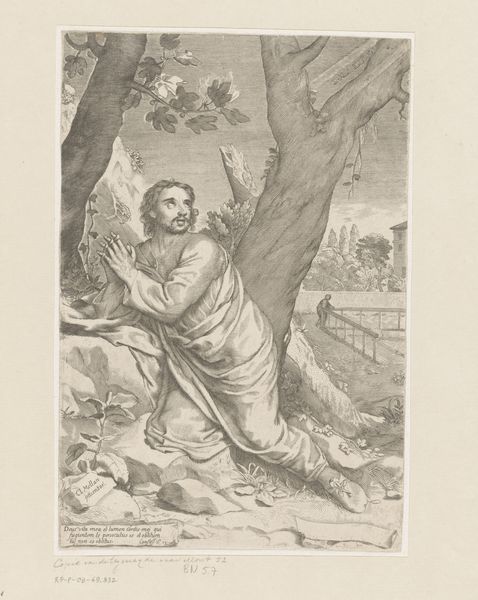
print, engraving
#
portrait
#
baroque
# print
#
pencil drawing
#
engraving
Dimensions: height 378 mm, width 244 mm
Copyright: Rijks Museum: Open Domain
Editor: Here we have Gilles Rousselet's engraving "Johannes de Evangelist" from about 1650 to 1655, currently at the Rijksmuseum. It strikes me as quite contemplative, almost serene despite the dramatic Baroque style. What draws your eye when you look at this print? Curator: Oh, what a lovely choice to ponder! You know, it feels like stumbling upon a very personal moment. John is so engrossed in his writing, it’s as though he’s sharing secrets only he and that watchful eagle understand. Notice the light, almost like a celestial spotlight, bathing both the angel and the landscape behind John—do you feel it as a physical presence? A gentle guiding hand of destiny perhaps? It whispers a Baroque tale, doesn't it, of revelation, and artistic vision all intertwined. Editor: I do. It makes me think about the relationship between the divine and the mundane, like he's grounded, writing with the eagle as his muse, but that angel overhead promises something bigger. It’s a juxtaposition, right? Curator: Exactly! And in this Baroque context, we aren’t just talking decoration; there’s a dialogue between earthly toil and celestial guidance. How do you interpret the inclusion of the Eagle? Editor: Well, I’ve always known the eagle symbolizes St. John, but here, it’s not just symbolic – it's alive, and actively involved. Almost as if it whispers inspirations. Curator: Indeed! The artist wanted to hint at divine inspiration, suggesting the stories are deeply linked and even dependent on one another. Beautifully intimate. Do you have a deeper appreciation for the piece now? Editor: Definitely. I'm seeing new layers, like how Rousselet used light and shadow to express St. John’s unique creative process. Curator: It makes you consider where your own inspirations might spring from. Doesn't art have a clever way of doing that?
Comments
No comments
Be the first to comment and join the conversation on the ultimate creative platform.
